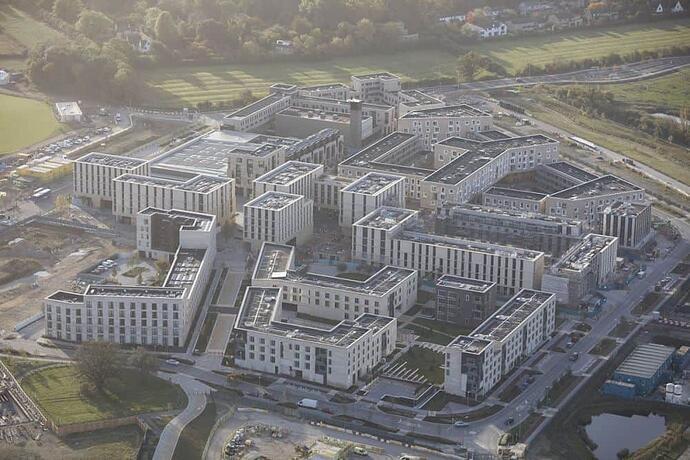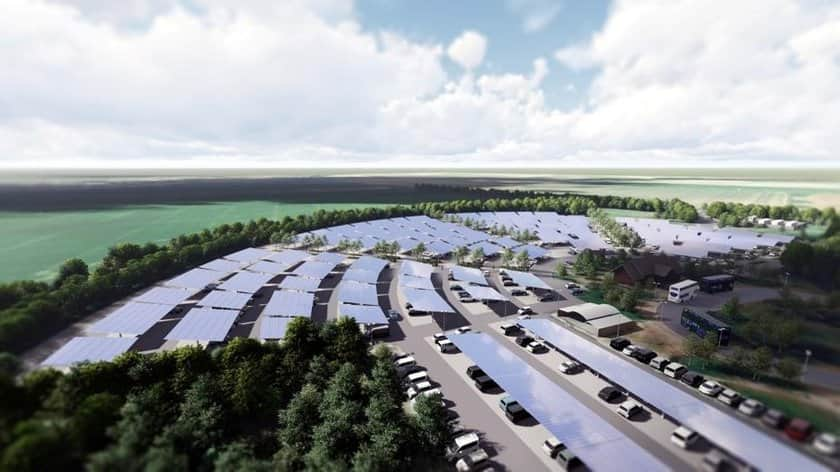Well, for a start:
26 January 2018
The 1,500 solar panels have been fitted on new buildings across the 150 hectare site in Eddington, just outside the city. Once finished the campus will house 3,500 graduates and university staff; new academic research space and public buildings, such as a primary school and health centre.
The 373 kilowatt array is estimated to cut energy use by over 298,000 kilowatt hours a year, according to G&H Sustainability, which completed the project.
The University is ensuring the new development is built to the highest standards in sustainability. Along with renewable energy, the site has a water recycling system reported to be the largest in the UK, and sustainable urban drainage.
8 Feb 2023
The College’s plans to install photovoltaic (PV) panels on the roof of King’s Chapel have been unanimously approved by Cambridge City Council, in a vote of the Planning Committee yesterday.
The installation of the panels has been designed to dovetail with the crucial conservation works to the Chapel roof, which will see the entire lead covering removed, sand-casted and replaced, all while maintaining access to the building for visitors, daily services and concerts. The plans, which form one facet of the College’s strategy to decarbonise its operations by 2038, will meet 100% of the energy needs of the Chapel and will reduce the College’s carbon emissions by more than 27 tonnes each year.
and the NHS is doing its bit:
Building begins for new solar energy
27 Jul 2022
Construction work has begun on a state-of-the-art solar panel project which will supply renewable energy to Addenbrooke’s and the Rosie Hospitals.
Situated at Babraham Road Park and Ride, and delivered by Cambridgeshire County Council, the 4,500 panels will transform the site into an energy source generating up to 2.5MW of green electricity and reduce CUH’s electrical carbon footprint by approximately 400 tonnes per year.
The energy will supply local charging for electric cars, buses and taxis, and the surplus will be purchased directly by Cambridge University Hospitals NHS Foundation Trust (CUH).
So, I’d guess that the University is doing its fair share of energy-saving, given that the amount of work required for listed buildings (of which they, presumably, have many) and the associated costs must be daunting:
Historic England: Energy Efficiency and Historic Buildings
This guidance covers the issues associated with installing solar photovoltaic (PV) panels on a historic building or on the land of a historic site. It describes the different options available and how they work. Advice is also provided on how to minimise the potential damage to the fabric and the visual impact of a renewable installation on the character and appearance of the building or site.
This guidance note is aimed at providing advice for building owners and occupiers who are considering installing solar PV panels to generate their own energy. It will also be useful for architects, surveyors, building contractors or similar building professionals who need to make the appropriate selection of equipment and method of installation to work within a historic building.
Before installation of renewables are considered, steps should be taken to cut energy consumption. Historic England has a wide variety of guidance on improving energy efficiency in historic buildings. This document forms one of a series of notes covering the installation of renewables and low carbon technologies such as heat pumps, solar thermal and hydroelectric.



